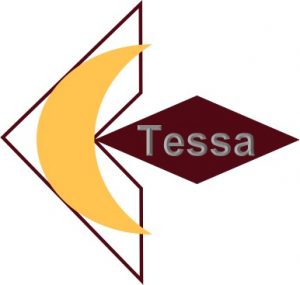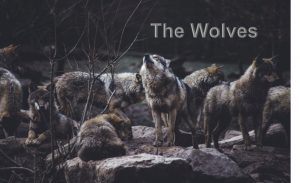For our group inquiry, Denee, Dane, Jessica, and I looked at using Apps in Outdoor Education.
Here is a screencast of our slides! Feel free to pause and look at the slides as you go!
Tessa Webb
For our group inquiry, Denee, Dane, Jessica, and I looked at using Apps in Outdoor Education.
Here is a screencast of our slides! Feel free to pause and look at the slides as you go!
Keiro’s presentation – stop-go animation
stop motion (can be downloaded)
used imovie to fade into the graphic
Photo shop
Pros
Cons
Things to watch for
REsources
Google Geographic Products
Google Maps
Google Earth
Lesson Ideas
Lessons – My Maps
Privacy
cartography has nationalism built into it. Originally the way that countries were delineated.
Digital Literacy
Information Literacy
Ethical use
Understanding digital footprint
Protecting yourself online
Handling digital communication – cyberbullying
Pros & Cons
Risks
Strategies, Tips, and Best Practice
Parents and Dig Lit
Sex, sexuality and the digital world
House hippo – media smarts
Jesse Miller Recap
The use of information that technology users provide is often used for another purpose.
Important to remember that technology is embedded in our colonial, patriarchal, capitalist society and to use with caution.
Pacific School of Innovation and Inquiry Recap
I wonder if having a deep dive into Inquiry before we do an inquiry would be helpful? A very useful question posed by Katrina
Inquiry definition – in the reading, first time seen, as people who are all grown in a scholastic environment of tests, assignments, products, and grades this is really uncomfortable.
Book recommendation
Inquiry can be a meaningful way of incorporating Indigenous People’s Principles into learning.
Some words we used to describe the students at PSII were:
empowerment, eloquence, courage, enthusiasm, inventiveness, variety of skills, depth of knowledge
Rebecca Bathhurst-Hunt
Using Inquiry in the classroom – Great ideas start with a Question, Wonderwall
Trello
Trello is a collaboration tool that organizes projects into boards.
App on phone
Good for keeping inquiries or ideas organized.
Screencastify
Notion – similar options
Graphics
Pixels – dots
Vectors – how computer stores information, can change size, has clear crisp lines. mathematically based, so just grows as size increased or decreased.
Graphic creation options: browser based – easy access for students/learners and often free or open source.
GIMP – often used, tries to replicate photoshop, but just slightly more annoying
Pixlr – right in browser.
Powerpoint


Apps
Screenshots
Prisma – filters
Mirror Lab
Comica – turn photos into comic strips
https://bryanmmathers.com/ – Visual Thinkery
https://remixer.visualthinkery.com/
Guest Speaker – Jesse Miller @mediatedreality
https://twitter.com/MediatedReality
Jesse Works with Social Media, having the conversation with teachers and students to help them understand the internet.
Here are some interesting highlights of his talk today:
Internet/App By-Products
This can be easily looked up on the internet. All (?) but definitely most things that occur on the internet have by-products that are saved and used for another purpose. Google “internet by-products” “saved information from free apps” to find more information
An Example of this:
Captcha (Prove you are not a robot by picking all the cars in this 9×9 grid)
Sometimes the conversation around the internet will only focus on internet safety, but we need to talk about our networked citizenship.
It is important to ask yourself – what is your_______?:
HEADLINES – designed to get people to click by causing an emotional response.
Some examples of headlines:
Should Your Child Have a Social Media Account?
This article is BIASED but this is a questions that everyone should be asking
Why Social Media is Not Smart for Middle School Kids
The Kids (Who Use Tech) Seem to Be All Right
“We shape our tools and, thereafter, our tools shape us” – John Culkin
A Double Edged Sword
Media and technology can be a positive addition to our lives but also has a lot of potential to be misused.
August 1941 – movie horrors & radio crime – “radio is causing nightmares” – content is what is the problem, not the technology, how did that technology shift society. double edged sword.
Cyber Bullying – important to know how to deal with bullies, who to talk to, how to avoid providing opportunities to a bully.
#teacherproblems
teachers fired over social media incidents
check with your school and district about appropriate communications. Understand policies and expectations.
any social media issues, texting, communicating – the more discussed and boundaries and expectations set the better it will work. Think of social perceptions.
Today in class we learned about video editing and audio recording.
Rich McCue lead this class. He posted instructions and links on how to use a couple different platforms for video editing and audio recording on his blog which can be found here: https://richmccue.com/
We discussed a couple ways that humans have historically used video for learning:
Audio Editing
I recorded a small clip on Audacity, which is a free open-source cross-platform audio software. It, and more information about it, can be accessed on the website https://www.audacityteam.org/
Here is a small sample recording I made in class (the first 5 seconds are silent) :
Video editing
There are a couple options for video editing which are listed below.
Today was the first time I had ever used the program, imovie. I was able to successfully figure out how to make the following video. I used files provided to us by Rich Mccue. The first clip was of chickens in front of a green screen, the second was the fish swimming in the coral reef, and the third file was the audio file of the ocean sounds. I learned how to splice them together and add audio. I found this platform fairly user-friendly and though not intuitive for me I was able to sort through the steps and make it work.
© 2025 A Teacher Education Journey
Theme by Anders Noren — Up ↑
Recent Comments